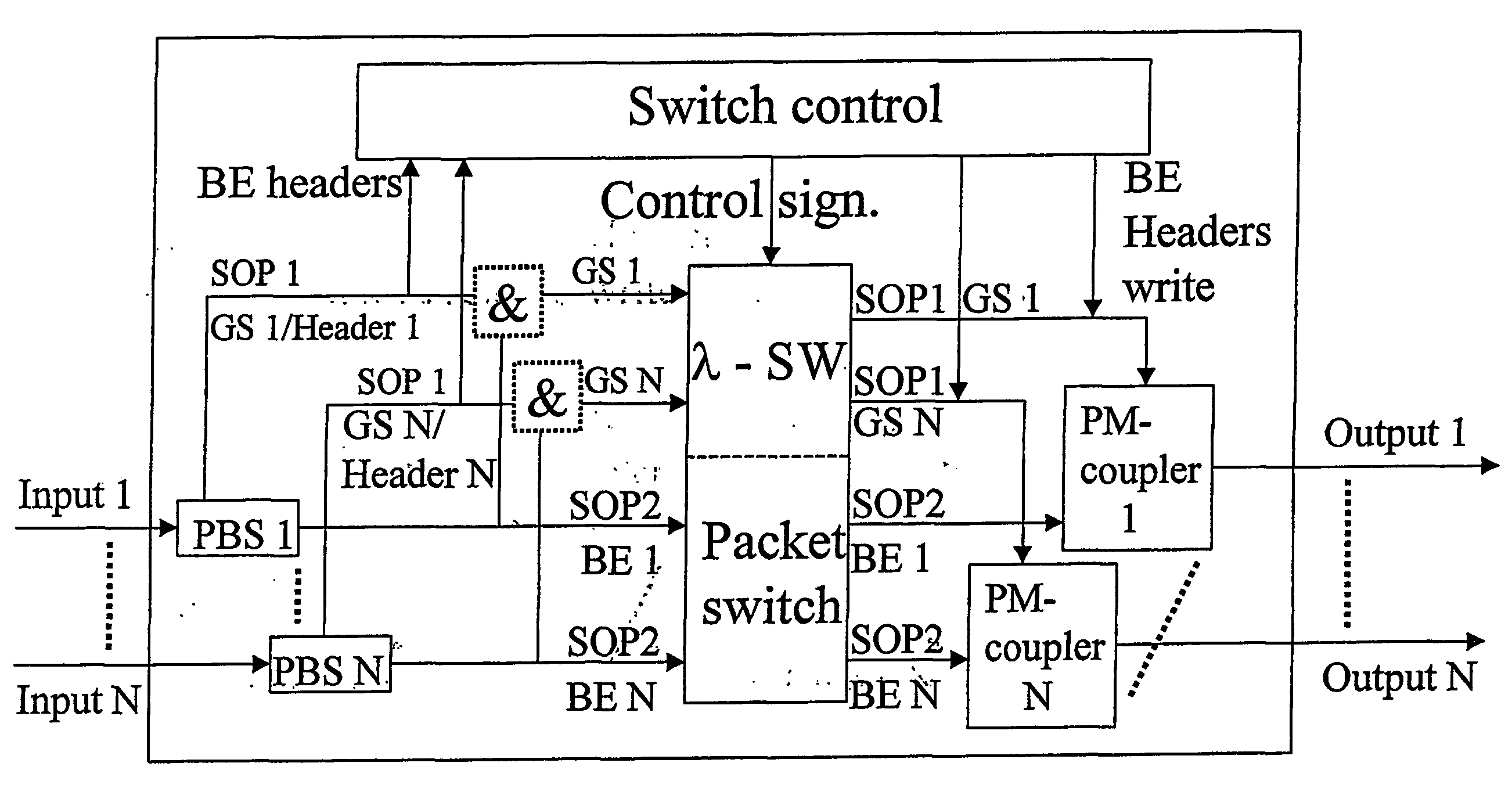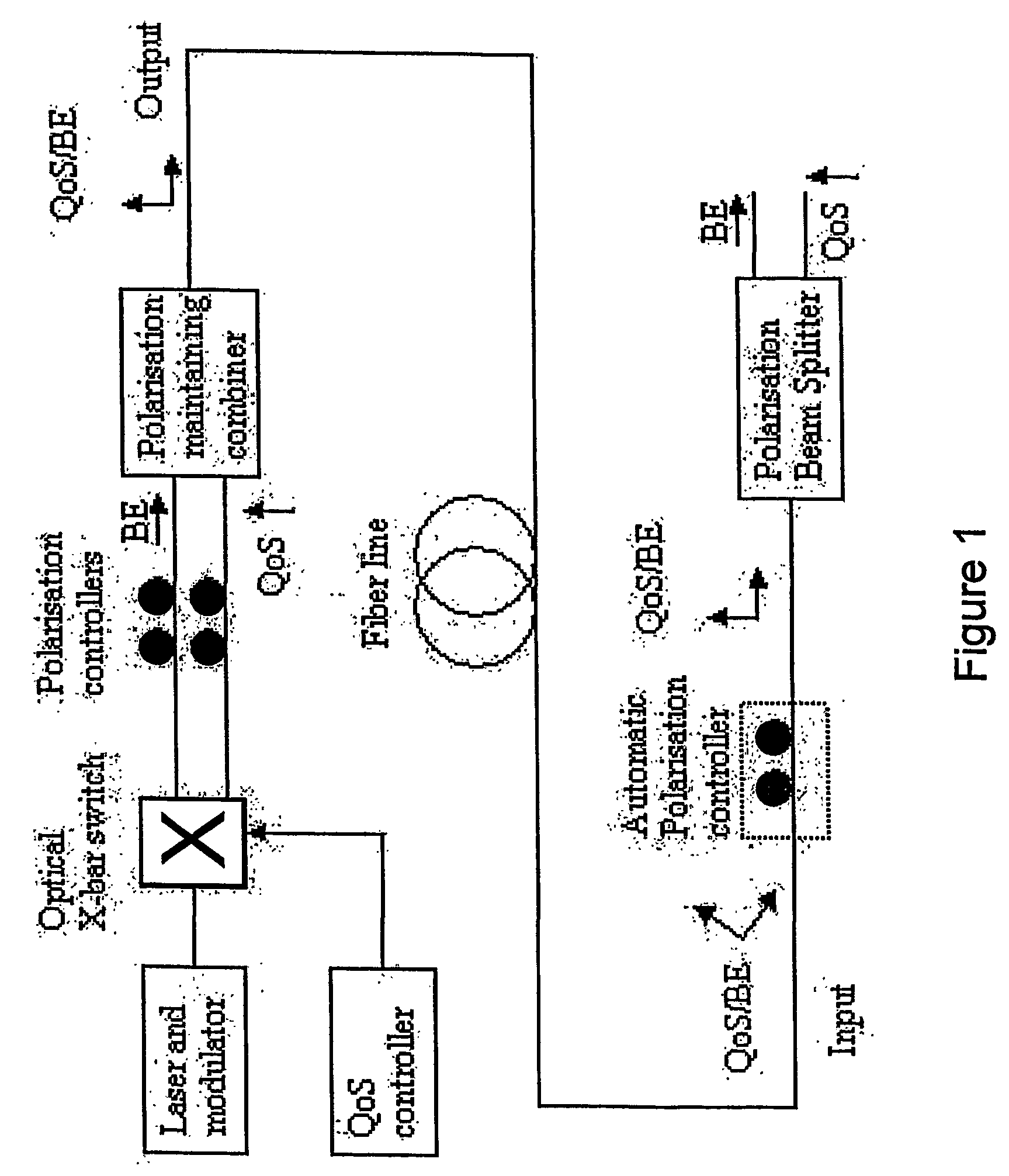Use of polarization for differentiation of information
a technology of information and polarization, applied in the field of polarization, can solve the problems of difficult demultiplexing in the time domain using optical components, restricted possibilities for signalling different types of information, and difficulty in forming headers or labels, so as to achieve the effect of reducing complexity and cos
- Summary
- Abstract
- Description
- Claims
- Application Information
AI Technical Summary
Benefits of technology
Problems solved by technology
Method used
Image
Examples
Embodiment Construction
[0038] In the following it is given a detailed description of the present invention with support in the enclosed figures. As mentioned earlier there are several problems related to OPS. The present invention is redressing these problems by other things by using polarization for signalling. One can imagine the signalization being used in different ways:
[0039] 3a) Synchronizing, the state of polarization changes at the beginning of each package.
[0040] 3b) Header- and payload within each package is separated by orthogonal states of polarization.
[0041] 3c) QoS-classes are separated by assigning different priority to packages to be processed, thus having different polarization on the transmitter side.
[0042] In FIG. 1 it is given an example on how the states of polarization may be used for optical separation between two different QoS-classes. The same principle may be utilized to separate optically between a header- and a payload. The method may, with the use of a polarization beam sp...
PUM
 Login to View More
Login to View More Abstract
Description
Claims
Application Information
 Login to View More
Login to View More - R&D
- Intellectual Property
- Life Sciences
- Materials
- Tech Scout
- Unparalleled Data Quality
- Higher Quality Content
- 60% Fewer Hallucinations
Browse by: Latest US Patents, China's latest patents, Technical Efficacy Thesaurus, Application Domain, Technology Topic, Popular Technical Reports.
© 2025 PatSnap. All rights reserved.Legal|Privacy policy|Modern Slavery Act Transparency Statement|Sitemap|About US| Contact US: help@patsnap.com



